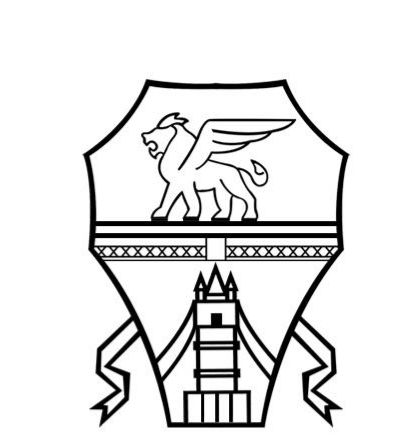If you are reading this article, you are probably thinking of developing a new website and want to understand the preliminary steps to take before you start “getting your hands dirty with code” or operating on the CMS.
In order to facilitate your work, save time and improve operations, it is very useful to have a strategy in mind, a sort of map with the lines that will guide your action in all phases of the development of your website.
Strategic analysis
Each project should be preceded by a first phase of analysis, in which the strategy to be followed in the most operational phases is defined. Perhaps the underlying points will seem trivial or obvious, but putting them “black and white” will allow you to give coherence and solidity to your project.
Goal definition
The first thing to do before carrying out any type of activity is to find the answer to the following question: what is the purpose of the site?
It is important that you are aware of this from the beginning, in order to never lose focus and make your choices only in relation to the answer to this question. Your goal could be to present your business, sell, raise funds, find members for your association, etc.
The clearer and more defined the goal, the easier it will be to create and design which pages to include on the site.
Definition of the audience
A second important point in the preliminary phase of website development is to define the recipient: what audience do I want to address?
The web potentially gives a way to be visible to the whole world, but it is difficult to stand out among the multitude of online sites. For this reason the best choice, at least in the first phase, is to choose an audience as precise as possible . Invest time to define in detail who your potential visitor is, who you would like to interact with your site. The more you narrow the field, the more effective your communication through the website will be.
Surely this point is easier to do than to understand. Most likely you already have your ideal audience in mind, but putting it “black and white” will allow you to create a coherent connection between the goal defined above and the next phase.
Definition of the actions to be taken
Now that you have a clear idea of the goal and who to turn to, here is the third question to answer: what do I want a visitor to do once they land on my site?
A ” I want you to buy” is not enough , because the steps and clicks that will have to be done in order to reach the purchase will be different. At this stage, you need to already have in mind how to drive it. What path do you want me to take from the homepage? Where do you want me to click?
Focus on one or two actions , no more. The more focused the user is, the easier it will be to direct him in the path useful to carry out the action you want to be done and therefore the achievement of your goal.
Wireframe creation
Once the strategic analysis is done, it’s time to move on to the actual design of your website pages. The work done previously is essential to act consistently in the construction of wireframes .
The wireframes are schematic illustrations of the elements that will make up each of the pages of your website and how they are organized in the same. They consist of a framework which will then be filled with the contents in the strict sense and the annotations relating to them. If the analysis carried out in the previous paragraph turns out to be the conceptual strategic map for the development of your site, the wireframes of the pages are the graphic prospectus that will guide the work in practice.
The simplest method to compose wireframes is with pen and paper, drawing the boxes, menus and other areas in which the compositional elements of the pages will be organized, indicating their functionality. If you prefer to create wireframes digitally, you can rely on the free online tool Canva , or, if you have more graphic skills, you can use software such as Photoshop. It is essential to be lean and clear to facilitate your work in the subsequent phases or for the webmaster who will follow you.
The choice of the tool is at your discretion, the important thing is to obtain clarity, not to insert too many fields, concentrate on a few useful elements for the previously defined objective . A user seeks immediacy, online has no time to waste, and wants to find everything immediately. Surely if yours is a showcase site, he expects to identify immediately: what you do, who you are and how to contact you. Better if you enter only one call to action per page (unless you run an e-commerce) and it will be easier to take the user to where you want.
Choice of the CMS
At this point, having defined the objective and guiding maps for web design, we come to a more concrete point: the choice of the CMS .
Unless you are a skilled developer able to create a website in code, you will use a CMS (Content management system), which is a content management system that supports you in the operational phase. A CMS helps you in the composition phase of a website, even if you do not have specific computer skills, as the intuitive graphical interface facilitates the work.
There are many CMSs available on the market, they are often free, and can have different functions. The most widespread and known is definitely WordPress, agile and versatile, both for blogs and for small e-commerce with well-known plugins such as Woocommerce. In case your goal is to sell, keep in mind CMS designed and structured for this purpose, such as Prestashop and Magento.
The purpose of this article is not to describe the differences between CMSs, but to emphasize that the choice of one over another always depends on your goal and your knowledge (and the webmaster) of the same.
Choice of hosting plan
The last preliminary step before starting the development of a website is to identify the right hosting plan suitable to support the application you are going to develop, as well as the visits you estimate to reach. The choice of infrastructure is the basis of your project, therefore it is an important moment as the development of the website itself.
A blog with a few visits a month is much lighter than an e-commerce with 5,000 products. If in the first case a simple Web Hosting is enough for you , in the second case you will evaluate a dedicated solution able to guarantee you adequate performance in terms of speed to generate sales .
Prestashop is a CMS that requires a lot of resources, while Magento 2 requires its own specific environment. Take a look at the technical characteristics of the CMS you have chosen, in order to be ready when you need to purchase the hosting plan and not have to change it during the race.
Finally, remember that all the steps outlined above are not a waste of time, but they will give coherence to your project and consequently greater communicative effectiveness. The online site is only the visible means of a well thought out development process.




